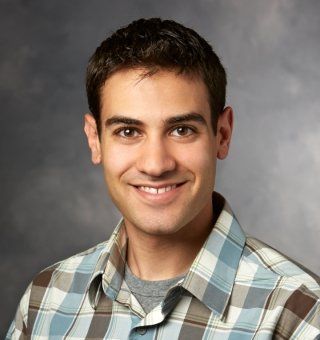The Link Between Physician Burnout and Medical Errors
A new Stanford University School of Medicine study sheds light on how physician burnout impacts medical errors.
Tawfik

Individual physician burnout and work-unit safety grades-summary estimations of the safety practices of a particular physician’s work area, graded as A, B, C, D, or F-are strongly associated with medical errors, according to a new study led by Stanford University School of Medicine researchers.
“Physician burnout is not a problem just of individuals, but of healthcare systems,” says lead study author Daniel Tawfik, MD, MS, instructor, Pediatric Critical Care Medicine, Stanford University School of Medicine. “The study suggests that attempts at medical error prevention should address both of these aspects in order to maximize their effectiveness.”
A nationwide survey unrelated to the Stanford study, conducted by the IHI/NPSF Lucian Leape Institute and NORC at the University of Chicago, found that most Americans are having positive experiences with the healthcare system, but 21% of adults have personally experienced a medical error. Johns Hopkins University researchers estimate that medical error is the third-leading cause of death, with approximately 251,454 deaths in the U.S. per year because of medical errors.
For the Stanford study, published July 9 in the Mayo Clinic Proceedings, researchers surveyed several thousand physicians practicing in the United States, representing all specialties. This survey included assessments of burnout and well-being, a work-unit safety grade for their primary work area (each respondent was asked to rate their primary work area’s safety practices, from A or “excellent” to F or “failing”), and respond to the question, “Are you concerned you have made any major medical errors in the last three months?”
Of the 6,695 who responded, 3,574 (55%) reported symptoms of burnout, and 10% of all all respondents reported that they had made at least one major medical error during the prior three months, a figure consistent with previous published research. The physicians also ranked safety levels in their hospitals or clinics using a standardized question to assess work unit safety.
Physicians with burnout had 2.2 times the odds of medical errors as compared to those without burnout, after adjustment for work-unit safety grades, fatigue, work hours, specialty, and demographics.
“Although personal resilience tools have been shown to help reduce burnout, the most effective burnout reduction will require system-level changes to reduce excessive job demands and clerical burden, promote efficient use of physicians’ time, align organizational culture with the values of the physicians, promote social support among colleagues, and demonstrate flexibility and willingness to change when concerns are raised,” says Tawfik.
The adverse events associated with physician burnout carry legal and financial implications for healthcare organizations, including medical errors, physician depression and suicide, and physician turnover, according to Tawfik.
The researchers also found meaningful and statistically significant associations for other aspects of physician well-being evaluated in this study, he says.
“Low quality of life, fatigue, depressive symptoms, and suicidal ideation all strongly associated with increased medical errors.”
Doing More and Saving More with Primary in Home Care
September 1st 2021In this week’s episode of Tuning In to the C-Suite podcast, MHE Associate Editor Briana Contreras interviewed VillageMD’s Senior Medical Director of Village Medical at Home, Dr. Tom Cornwell. Dr. Cornwell discussed the main benefits of primary care at home, which includes the benefit of cost savings for patients, maintaining control of hospital readmissions and others. Dr. Cornwell also noted what has changed in the industry of at-home care and if there has been interest from payers like insurance companies and medicare in the service.
Listen
This week on Tuning Into The C-Suite Briana Contreras spoke with Dr. Scott Hayworth, president and CEO of New York-based CareMount Medical. In this interview, the two discussed the importance of patients staying in contact with their doctors for the sake of reducing public health risks and to discuss ongoing care options with them.
Listen